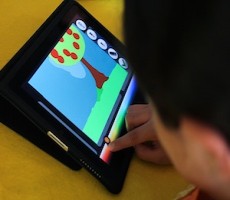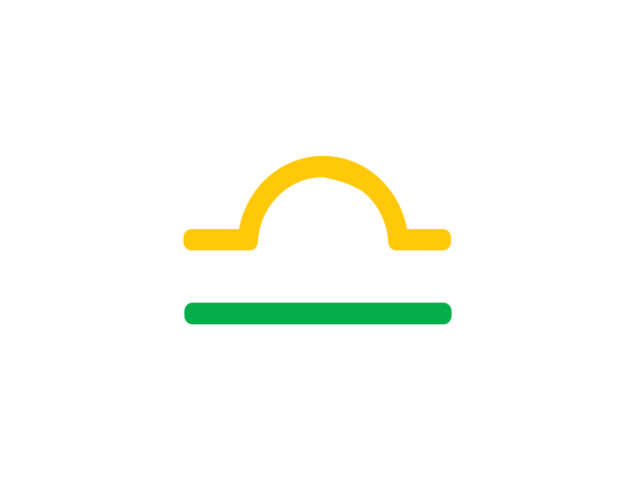 Picture for a second the first thing you ever constructed, designed, prototyped, or invented. If you’re like most of us, there’s a pretty good chance that you built your idea using toys like LEGOs, Play-Doh, Lincoln Logs, or perhaps, to your parents’ dismay, a mix of all of the above (good luck getting Play-Doh out of those bricks). Over the years, magazines like MAKE have featured lots of DIY toy projects, but very few talk about designing for Creative Play — how to invent a toy that will not only entertain, but ultimately empower kids to design and share their own imaginative inventions.
Picture for a second the first thing you ever constructed, designed, prototyped, or invented. If you’re like most of us, there’s a pretty good chance that you built your idea using toys like LEGOs, Play-Doh, Lincoln Logs, or perhaps, to your parents’ dismay, a mix of all of the above (good luck getting Play-Doh out of those bricks). Over the years, magazines like MAKE have featured lots of DIY toy projects, but very few talk about designing for Creative Play — how to invent a toy that will not only entertain, but ultimately empower kids to design and share their own imaginative inventions.
Today we present four easy steps for all you budding toy (and digital toy) designers to do for the next generation of kids as LEGO and so many others did for us: inspire and scaffold imagination.
Step 1: Pick your Play Pattern and Hone your Insight
Isaac Newton famously declared, “If I have seen further, it is by standing on the shoulders of giants.” The same could very well be said for toy design. While there are hundreds of new toys and games released each year, every one of them is rooted in core play patterns derived from basic human behaviors. The not-so-great toys (Pet Rocks) are inherently limited to one or two play patterns (collecting and… well, collecting), but the best toys, like LEGOs, appeal to a variety of play patterns (modeling, collecting, storytelling, invention) over a range of ages and developmental stages. These are called “grow-with-me” toys because kids’ play with the toys adapts over time with their cognitive development… from DUPLOS to LEGOs to MindStorms.
As designers, we should be wary of jumping straight to a particular concept or execution and instead take time up-front to observe these play patterns to identify potential gaps in the child’s experience. Once we’ve identified a gap in a natural play pattern, then we can focus on ways to improve upon and empower the child’s experience with new features and products.
Take, for example, doll play. Dolls and action figures are some of the most popular toys because they’re (sometimes quite literally) vehicles for so many different play patterns. Some kids collect dolls while others use them for storytelling, battling, or nurture play. Looking closely at kids’ storytelling with dolls and action figures, one might observe that children tell incredible stories through narrative play at a young age, but struggle to share those stories through more formal disciplines like Creative Writing. In short, there is a gap between what the child imagines and what his or her tools (toys) currently afford. As a designer, this insight is invaluable. What can we create to help kids bridge this gap and realize their imaginations in a format that is more easily shared with friends and family? (Note: The goal here shouldn’t be to replace the child’s imagination, but to spark it with creative tools.)
Step 2: Choose your Platform
Once you’ve settled on your insight, the next logical step is to figure out what form your concept should take. Traditionally, toys and games offer very different approaches to play. Toys are kid-driven, tangible catalysts for imagination. Games, on the other hand, represent a collection of rules and challenges for achieving a pre-determined objective. Until recently, video games (and their digital platforms) have been similarly limited, but with the advent of mobile touchscreen devices like the iPad, these two worlds are colliding to create tangible, kinesthetic, mobile play experiences for kids. We’ll call this new field Digital Play.
As a toy designer, Digital Play is very exciting. For years, we’ve been stuffing electronics into toys to make them more empowering, but in many cases achieving just the opposite and limiting creativity. Conversely, platforms like the iPad allow us to stuff the toy into the electronics and create hands-on, open-ended, and narrative play experiences that not only replicate traditional toys, but infuse them with digital capabilities to further empower the child’s imagination. In short, regardless of the play pattern you choose, there are more options than ever for realizing your goal.
Step 3: Break, Break, Break it Down
So far, our steps have been pretty generic to the larger field of play. You’re probably asking, “What’s so special about Creative Play?” Well, a lot. Toys for creative play are not “all-in-one” experiences, but rather components of a larger ecosystem — catalysts for an open-ended world that will, if all goes well, extend far beyond even your wildest imagination. Once you’ve picked your play pattern, honed your insight, and chosen your platform, it’s time to break your big idea down into itsy bitsy pieces — not toys themselves, but independent tools that can be flexed, torqued, and manipulated (sometimes figuratively, sometimes literally) into new and unique creations.
This brings us to two important distinctions between kids and adults. First, most adults are capable of juggling a variety of complex concepts simultaneously. Young children, on the other hand, generally lack the cognitive ability to multitask or follow multi-step sequences. As designers, it’s important to break complex processes and concepts down to their fundamentals – to create Primitives (as a programmer might say) that are more easily grasped and manipulated. Going back to the example of creative writing, it’s important to break down big abstract ideas like “story” into its fundamental components: Character, Setting, and Emotion — and to make implicit concepts like “Narrative Arc” explicit through the structure of the toy (either physically or visually).
These primitives also serve another role: story starters to spark the imagination. This brings us to the second important distinction between kids and adults. Most adults like blank canvases because of their endless possibilities. They’re inspired by the fact that they can create just about anything. Many kids, on the other hand, are just the opposite — those endless possibilities, at least at first, can be more inhibiting than inspiring. Much like product design, constraints in play are in fact empowering — they scaffold a novice’s first steps and challenge the expert to think outside the box/brick.
In short, our greatest hurdle in designing for Creative Play is finding the right level of granularity. Too few components might make for either a conceptually complex or blunt tool. Too many pieces or too much flexibility could overwhelm or under-stimulate.
Step 4: Prototype, Test, Rinse, Repeat… and Produce
Despite what your mother might tell you, you’ve matured a lot since childhood. Sure, you still love toys and games, but you probably don’t play with them in the same way and your brain certainly doesn’t think the same way that it did when you were five years old. This is why it’s critical to kid-test your ideas at every step and, if possible, with different kids every time. If you can find a willing partner, museums are really good places to kid-test given that they have new visitors every day.
Just like any product, the first step should be a good low-fidelity prototype. Paper prototypes are a great start, but it’s important to make sure they’re not too abstract or too delicate. Kids aren’t always capable of making the same cognitive leaps that adults do — screenshots, for example, are much more effective than black and white wireframes. Likewise, play is rough, tough, and hands-on — so your prototype should be robust enough to withstand some abuse.
Once you’ve found the holes in your prototype, go back to the drawing board. Reassess and refine… then go through the cycle again… and again… and again until you come home empty handed… because your kid testers absolutely refused to let go of the toy.
Once you’ve nailed the play experience for your target user, take some time to think about ways to extend it older and younger. How can your toy be a “grow-with-me toy” that is both accessible to younger users and extensible for older kids? How can you utilize older kids’ masterpieces to encourage creativity in your younger users? Might those older “experts” in turn become teachers — inspiring a virtuous cycle of Creative Learning and a whole new generation of playful inventors to follow?
Andy Russell is a toy and game producer and a co-founder of Launchpad Toys, a San Francisco-based educational media startup building digital tools that empower kids to create, learn, and share their ideas through play. The company’s first product, Toontastic, is a Creative Learning tool for the iPad that empowers kids to draw and animate their own cartoons and share them with friends and family around the world.




